A bright memory to the intellectual elite of the country on the Day of Remembrance of Victims of Political Repression in Kazakhstan. In 2024, Beimbet Mailin turns 130 years old.
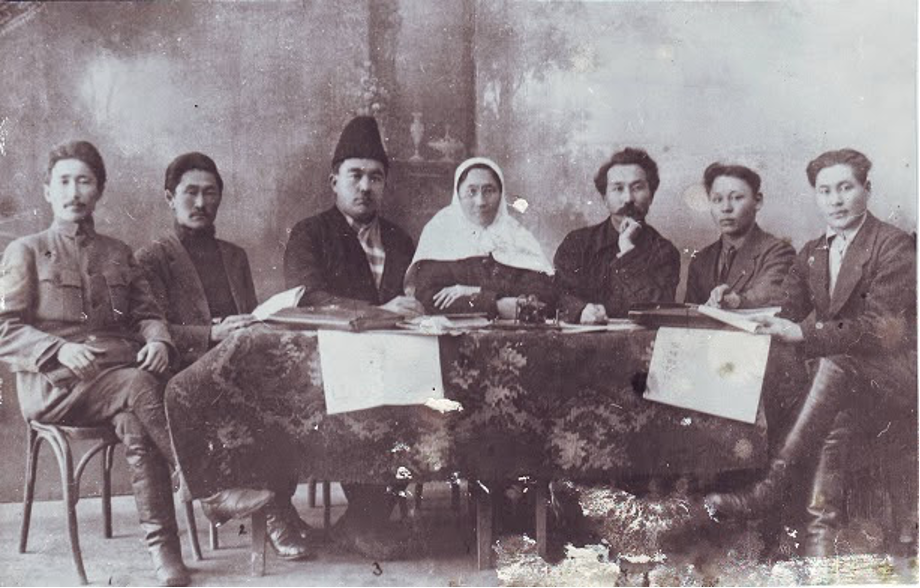
Editorial office of the newspaper "Enbekshi Kazakh".
The writer was born in the Aktobe tract of the Taranovsky district of the Kostanay region on November 15, 1894. As a child, Beimbet lost his parents and was raised by his grandmother, who, despite her poverty, was able to give the boy an education.
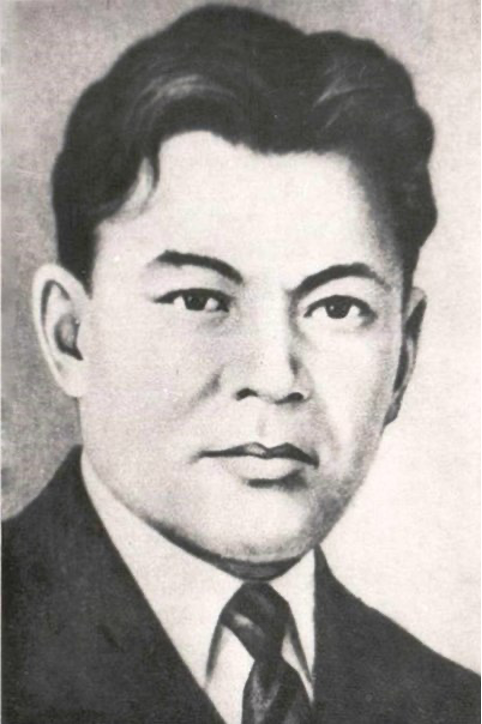
The writer was born in the Aktobe tract of the Taranovsky district of the Kostanay region on November 15, 1894. As a child, Beimbet lost his parents and was raised by his grandmother, who, despite her poverty, was able to give the boy an education.
He received his primary education from an aul mullah, later he entered the aul madrasah for two years. The desire for knowledge leads him to Troitsk, to the "Uazifa" school, he graduated from the Russian-Kazakh school in Kostanay, studied at the "Galiya" madrasah in Ufa. In 1916-1922, Beimbet Mailin worked as a teacher in his native village. Meeting with professional writers - Mukhamedzhan Seralin and journalist, poet Sultanmakhmut Toraygyrov, further strengthened Beimbet's desire for literary pursuits. In 1922-1923 he worked in the newspaper "Enbekshi Kazakh", published in Orenburg, in 1923-1925 - in the newspaper "Auyl" of the Kustanai province. In 1928-1932 he worked as a literary employee, editor of the newspaper "Kazak tili", in 1932-1934 - head of department, editor of the newspaper "Socialistik Kazakhstan", in 1934-1937 - editor of the newspaper "Kazak adebieti".
Beimbet Mailin's creative path began with the creation of poetic works - the first poem published in the periodical press was "Thoughts" (Aikap magazine, 1914, No. 12). In the poems "Features of a Muslim", "Need", "Cattle", "Wealth", "Summer Evening", Mailin described his thoughts about life, injustice, and the hard lot of the people.
(1912-1915)
The poem "Bloody Mist" is dedicated to the events of the national liberation uprising of 1916. Hoping for the February Revolution, he wrote the poems "In the Steppe", "To the Kazakh".
The hero of many poems, poems, and stories by Mailin is a poor man who was oppressed in the past and became a builder of a new life, for example, the hero of his lyrics Myrkymbay in the poems "Myrkymbay", "The Annoyance of a Poor Man", "Give Your Hand, Myrkymbay", "Hey, Myrkymbay" and others. Radical changes in the life of the steppe, the collective farm village, collectivization are reflected in the poems "New Song of the Village", "Song of the Collective", "The Day Has Come", "Awakened Steppe"(1922-1930).
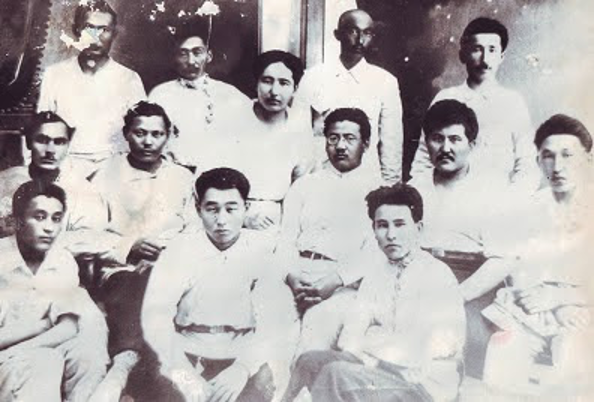
B. Mailin with young Kazakh writers
Beimbet Mailin is the author of more than ten poems. Mailin's first collection of poems was published in 1936 under the title "Marzhan". Among the poems written: "Bai's Daughter", "Raziya Girl", "The Runaway", "Marzhan", dedicated to the tragic fate of a Kazakh girl in a pre-revolutionary village, "Kanai", "Sagyndyk", "The Old Woman's Tale", describing the Civil War and the establishment of Soviet power in Kazakhstan. (1920-1936)
Mailin made a great contribution to the development of the prose genre in Kazakhstan, especially the short story. His first story "The Truth" was published in the magazine "Aikap" (1915, No. 10). Among the stories written: "Eighty Rubles", "Equality of the Poor", "Ayranbai", "Dappled Ambler", "Justified Labor", "Red Striped Fur Coat", "Shapay's Letter", "Collective Farm Chairman Kamila", "Black Bucket", "Ulbosyn", "Mukysh, Son of Arystanbay" and others.
The writer is also known as a talented essayist and feuilletonist. In the collection of essays "At the Construction Sites of Giants" (1934), he reflected the intense life of Soviet people during the years of industrialization, in the collection of feuilletons "Cuttings" (1924) he fought against the vestiges of the past in people's minds.
The most famous of all his works is his first novella "Shugi's Monument", written in 1915, revised and published in 1922. In it, Mailin realistically described the fate of a Kazakh girl forced to obey customs. Later, in his novellas, Mailin repeatedly returned to the problem of women's equality (the novellas "Communist Raushan" in 1923, "Beren" in 1935). In 1933, the writer wrote the novellas - "Amirzhan's Story", "Fifteen Yards", "On the Threshing Floor", which describe the struggle for the establishment of Soviet power in Kazakhstan, collective farm construction.

The photograph shows public figures of Kazakhstan in the 30s of the XX century – Beimbet Mailin (in the second row, fourth from the left), Ilyas Dzhansugurov, Saken Seifullin, Sabit Mukanov, Zhakan Syzdykov, Abdilda Tazhibaev, etc.
Changes in the political system in the steppe are also shown in the novel "Azamat Azamatovich" (1935), which was the first part of the planned trilogy, in 1935 the novel was translated into Russian under the title "Daughter of a Kazakh". Mailin's other novels ("Red Flag", "Neighbors", "Clash") have not survived, excerpts from them were published in the magazine "Adebiet Maidany" in 1932-1936.
Mailin also made a great contribution to the development and development of various genres of drama in Kazakhstan,(1916-1936) he wrote the plays "Mullah Shanshar", "Betrothal", "Protocol" Amangeldy (co-authored with G. Musrepov), "Taltanbay's Orders", "Front", "Daughter-in-law and Mother-in-law", "Zhalbyr", "Our Jigits" and others.
The writer's life and creative path were tragically cut short. In 1937, he was arrested on charges of counter-revolutionary, bourgeois-nationalist, insurgent-terrorist activities and, according to the definition of the military collegium of the Supreme Court of the USSR on February 26, Beimbet Mailin was sentenced to death by shooting with immediate execution of the sentence. /After the writer's execution, his wife Kulzhamal was arrested and sent to a camp, and even before that, all her children were taken away from her one after another and taken to orphanages. After her release in 1946, she searched for her children for a long time. But she managed to return only four. /
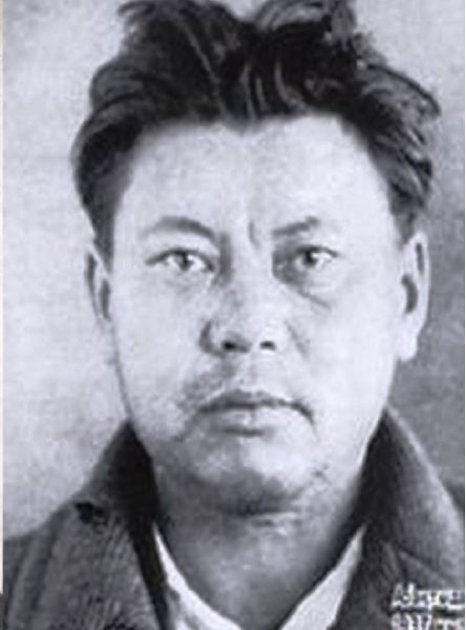 The last photo of the writer from the NKVD archive
The last photo of the writer from the NKVD archive
Only in 1957, by the decision of the Supreme Court of the USSR of April 16, Beimbet Mailin was rehabilitated, the sentence was overturned and the case was dismissed due to the absence of a crime.
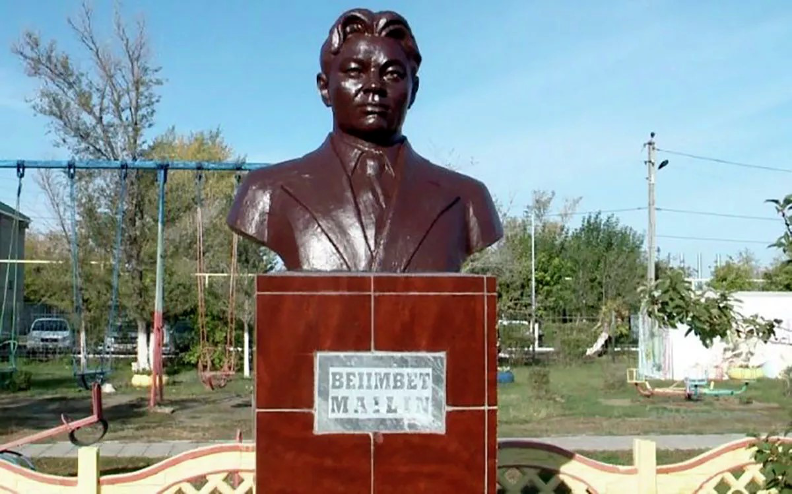 A village and a gymnasium in the Taranovsky district, a street in Kostanay, are named after him. A monument to B. Mailin was erected on the square near the railway station of the regional center, a memorial plaque was opened on the building of the editorial office of the "Kostanay Tany" newspaper, and a monument was erected in the writer's native village. The Writers' Union of Kazakhstan awards the B. Mailin Prize for achievements in the field of literature.
A village and a gymnasium in the Taranovsky district, a street in Kostanay, are named after him. A monument to B. Mailin was erected on the square near the railway station of the regional center, a memorial plaque was opened on the building of the editorial office of the "Kostanay Tany" newspaper, and a monument was erected in the writer's native village. The Writers' Union of Kazakhstan awards the B. Mailin Prize for achievements in the field of literature.
Materials from /biografia.kz/ and photos from open sources were used,from the Taranovsky Historical and Local History Museum named after B. Mailin.